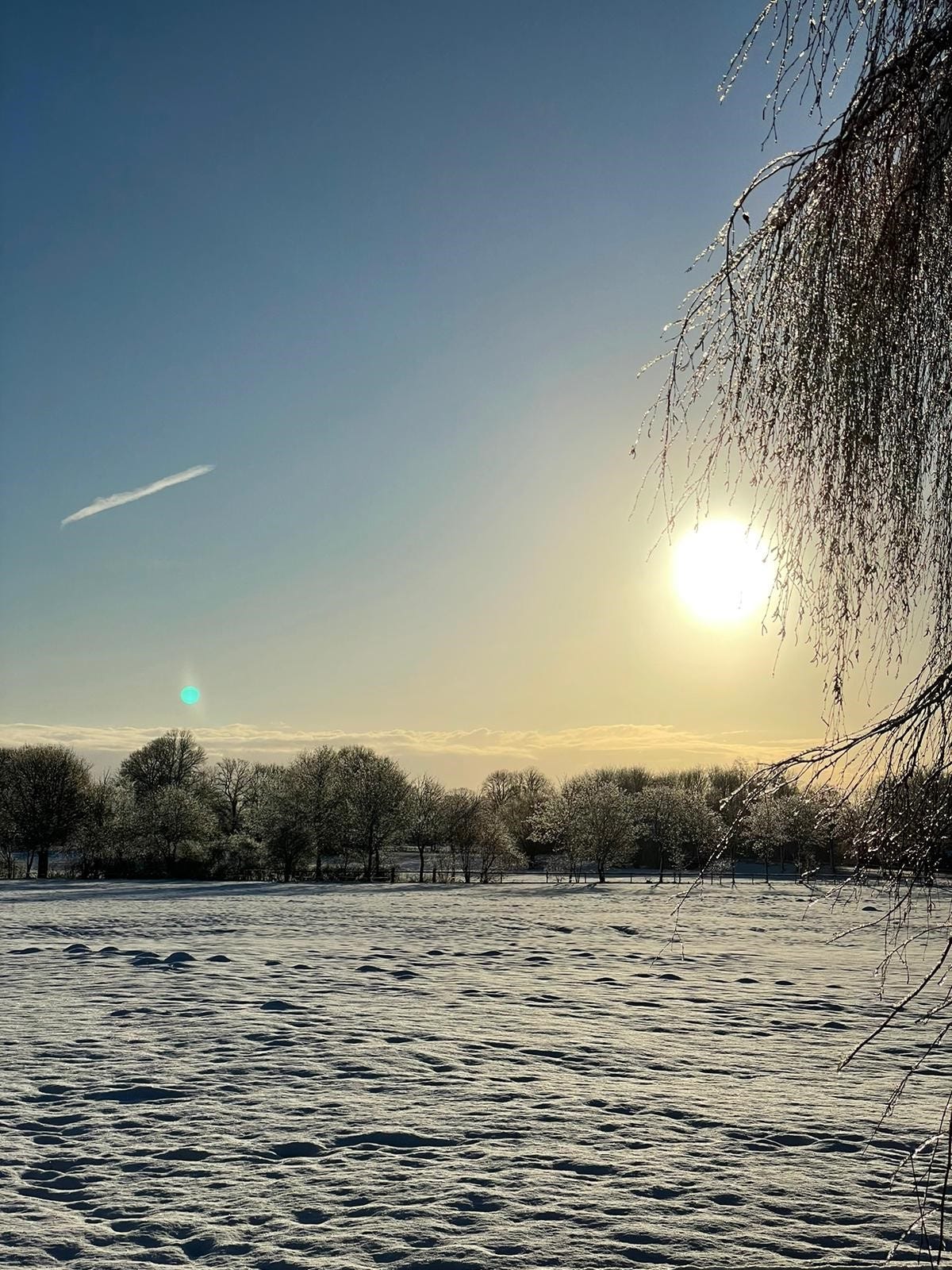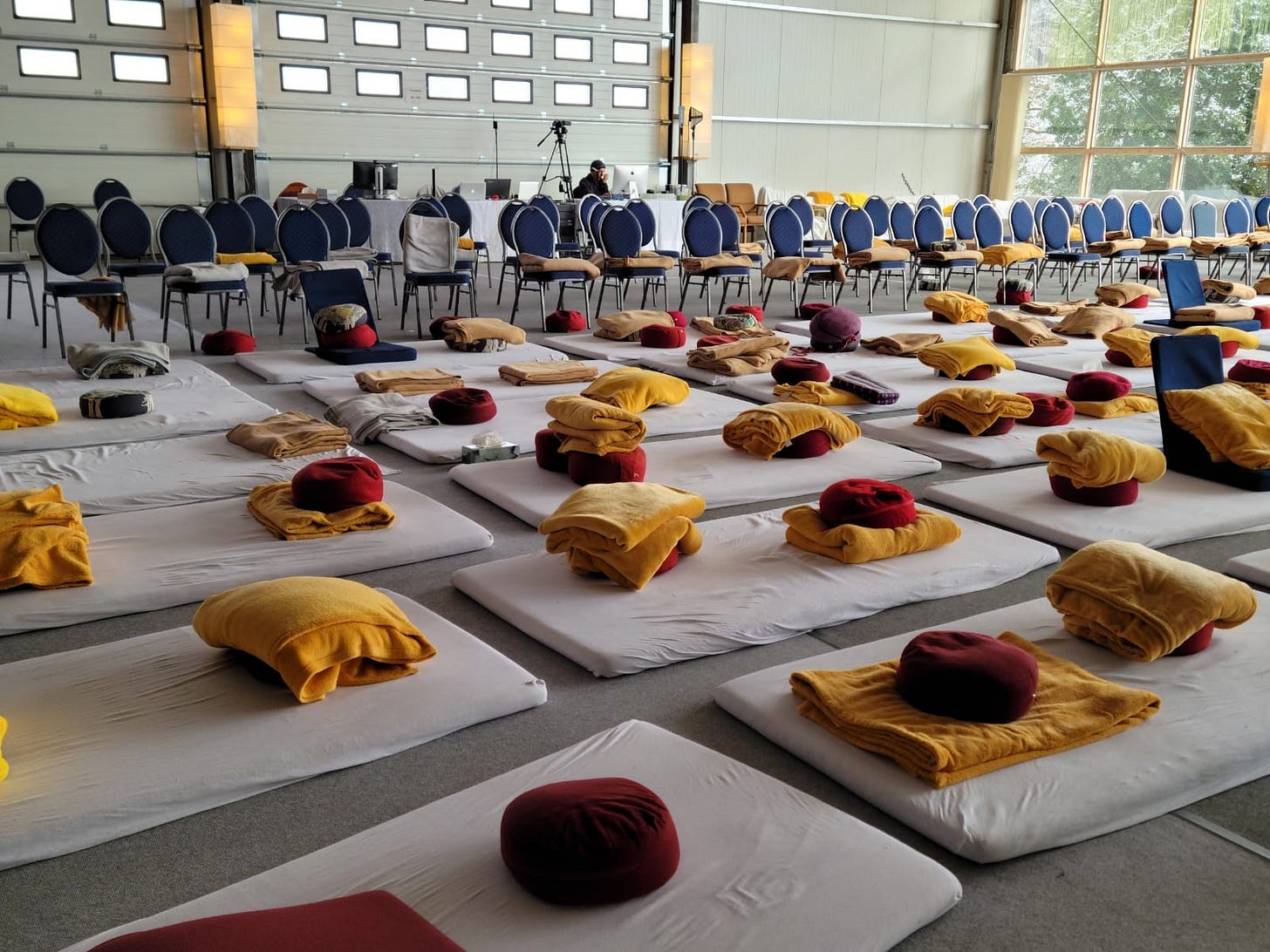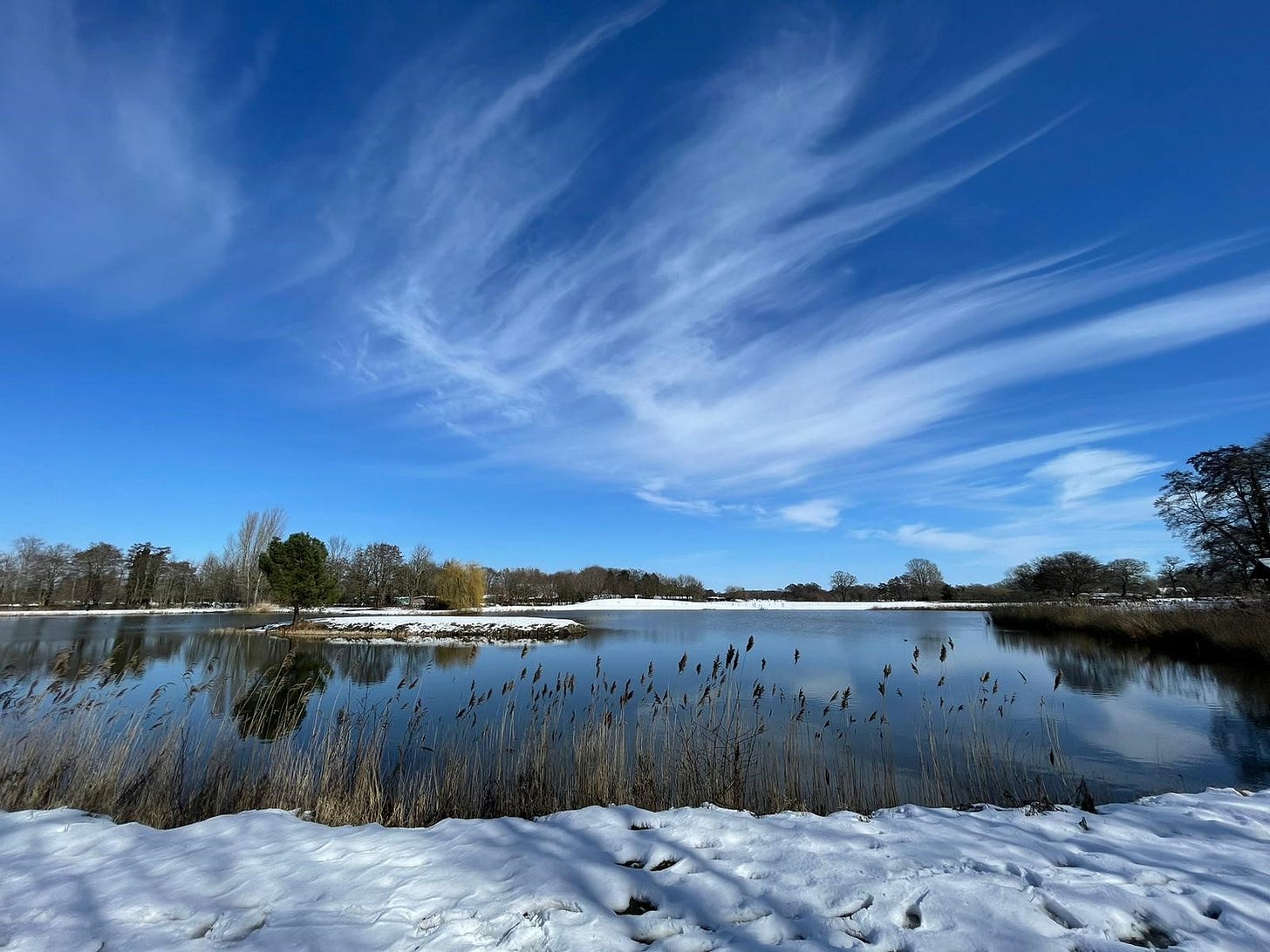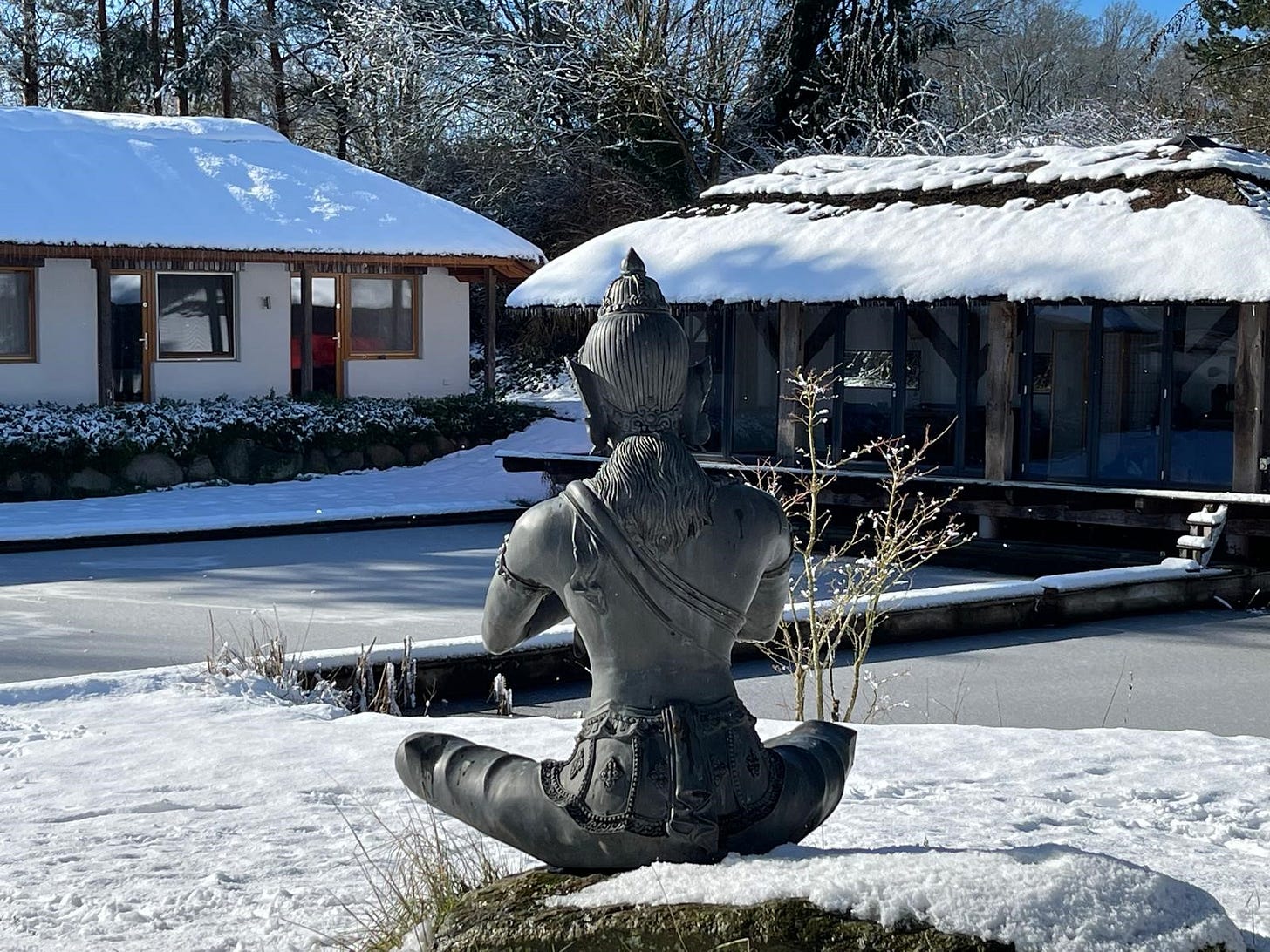Resonant World #21
Sometimes healing unfolds with exquisite softness.
There is a moment of contact with a grief that is finally ready to be felt.
The sadness deepens — almost dangerously so.
But it is safe now, and the feeling is allowed to complete its original movement.
Tears may fall. An exhale. And all that lingers is a knowing: A fragment of soul has been restored.
That wasn’t how it was for me at 09:30 German time on Sunday as I was tucking into my fruit salad, vegan yogurt and porridge. The healing arrived through uncontrollable, gut-wobbling, who-cares-what-anybody thinks laughter.
By then, some two hundred participants in Thomas Hübl’s Timeless Wisdom Training were nearing the finish line in a seven-day silent retreat held at the start of the second year of the two-year programme.
The retreat is a big deal. By this point, everyone had done a year of intensive inner work together — at two previous week-long retreats (where there was a lot of talking); many online gatherings; weekly meetings for deep encounters with coursemates; countless other exchanges, and — if you’re really following the training to the letter — an hour of meditation a day. The cumulative effect had been to build a high level of what is known in the training as “coherence”: A quality in a group that is much easier to sense than it is to describe.
At the most basic level, coherence implies safety — in our case established over countless hours of witnessing each other work through the manifold ways ancestral and collective trauma expresses itself in our individual experience. But safety is the foundation — not the goal. When the level of coherence reaches a certain threshold, something new enters: A mysterious form of collective intelligence that is far greater than the sum of individual interactions. Working with this intelligence is what makes this form of collective healing work so powerful.
New Frontier
As I wrote in Resonant World #20, I’d done a 10-day silent Vipassana meditation retreat in northern India in 2011, and so I knew a bit about what to expect. But this would be different. Profound though my Vipassana experience had been, that retreat had thrown together a bunch of strangers — mostly backpackers touring South Asia — who’d happened to sign up for the same slot in the course calendar. The Timeless Wisdom Training was a shared journey from the outset. Seven days together in silence promised to take us into uncharted territory.
With a demanding job and family life, I’ll confess that my meditation practice is sporadic — at best. So I’d felt a strong calling to make the most of this opportunity to dig deep. For the first four days, I fasted — drinking only water and a few cups of black tea. I had a strong sense that I needed to reboot my system at the physical level to support shifts at the emotional and spiritual level — and a strict fast seemed like the surest way to power down.
Skipping meals also gave me more time on the mat, and with no dinner to digest, I found it easier to wake up to take my turn among those who kept the meditation going through the night. And there was maybe a deeper echo to my choice: According to some systems, my personal Tarot card for this year is The Hanged Man. As I had learned on a course taught by Gahl Sasson, The Hanged Man is about renewal through sacrifice.
This archetypal pattern finds vivid expression in the legend of Odin, the Norse God who impaled his heart with his spear, then suspended himself from Yggdrasil, the World Tree, for nine days and nine nights — staring down into the waters of the Well of Urd to fathom the mystery of the runes. Throughout that time, Odin forbade any god to come to his aid — not even to bring him a sip of water. As I learned from Sasson, the tale is retold in Hávamál, a poem in the Codex Regius, a collection of Old Norse poems from the Viking age:
“I know that I hung on a wind-rocked tree,
Nine whole nights,
With a spear wounded, and to Odin offered,
Myself to myself;
In that tree, of which no one knows
From what root it springs.
Bread no one gave me, nor a horn of drink,
Downward I peered,
To runes applied myself, wailing learnt them,
Then fell down thence.”
Though there was no requirement to impale oneself, the first few days of the retreat were challenging. My legs ached, and I struggled to stay still for more than a few minutes at a time, while battling a streaming cold (fortunately not COVID). As diligently as I could, I followed the instruction to keep bringing my awareness back to the subtle sensations in my body — and then to become aware of being aware. Meditation at this level is the mental equivalent of digging a ditch — there is nothing for it but to keep putting in the spadework. No short cut. No easier way. No expectation of any outcome. Just dig.
“Temple Of Doom”
Compared to what many of my comrades were wrestling with in the hall at Hof Oberlethe, the retreat centre outside Oldenburg, I had it easy. As we would later learn during moments for sharing, the unresolved past of the worst that humans can do was very much alive in the room. Many were sitting with a level of physical and mental pain I would not approach. Fellow participant Philip Siefer would later describe his experience of the first few days as sitting in “terror and despair, hate and inner torment” — burning in his personal “Temple of Doom.” (Later, rewards would come. “The potion seems to be working,” as he told me.)1
Though I wasn’t quite in such a Hell realm, my mind wasn’t letting go without a fight, either. Familiar mental loops reasserted themselves: Comparing myself to others; questioning whether I’d achieved enough — or the right things. I saw the covers of best-selling books written by peers of mine and felt an empty feeling — like I’d been left behind. I revisited moments of professional failure — big stories I’d publicly missed during my career as a correspondent; smaller, private disappointments. I relived scenes of personal embarrassment — with friends, in relationships, at work. Mercifully, there was no repeat of the wall-to-wall sex scene visions that had hijacked an entire day on the Vipassana retreat — though there were moments when my mind conjured images of monstrous slabs of cake.
Cruising Altitude
Something shifted when I broke my fast. Tears of relief welled up as I savoured my first bites of food. My system felt deliciously renewed. The meditation got easier. Later that day, I found myself sitting for 40 minutes with barely an impulse to move. My mind was much quieter; and my body felt so spacious I wondered if I might pop into another dimension. I felt a thrill of pride — like a kid who’s suddenly able to balance well enough on his bike to turn to his parents and shout “Look — no hands!” I assumed my newfound inner glow would have been clearly visible to all the 200 other people in the room — had they not all also had their eyes closed.
It was at that point that the hard graft of the first few days gave way to deep pleasure. I began to notice what it felt like when my awareness made the gentlest possible contact with the subtle sensations in my body. This was an entirely new form of intimacy (what the poem meant by “Odin offered, Myself to myself”?) My awareness and my sensations were delicately making out with one another. Had anyone else been involved, this would have been the most erotic encounter imaginable while seated. And there was a purity in this bliss that had nothing to do with the lurid scenes of my Vipassana “sex day.”
Meanwhile, a story book snowfall across Lower Saxony had transported the retreat centre to circa seventh century China. I wondered if — as well as invoking Odin — I could enlist Tu Fu, the Classical Chinese poet, refugee and visionary, (Resonant World #15) as my spirit guide.
Radical Entanglement
All this was great fun, but there was a deeper awareness emerging that felt like it would outlast the fleeting experiences of the retreat. The arbitrary nature of the self-critical thoughts that could generate such a background hum of unease in my everyday life had become so starkly apparent as to render them absurd. It wasn’t that the judgments ceased entirely — they just lost their potency. Comparing myself to others suddenly seemed about as compelling to me as the idea of spending my evenings hand-stitching bespoke costumes for a neighbour’s cat. I mean — I could theoretically do that, but why would I bother?
Physically, I felt a new energy flowing through me. If I’d been an electric appliance, this would have been the moment where I’d switched from batteries to the mains. On this higher voltage, I felt a new appreciation for the radical entanglement between what goes on inside of me, and what appears to be happening outside. I saw that what had looked like “problems” from my normal state of consciousness could be viewed from another level simply as misperceptions. Seemingly painful circumstances merely represented the more pressing invitations to look deeper inside.
From this perspective, the work of healing trauma was no longer just a question of alleviating individual suffering: It was an evolutionary impulse of global significance. And the beauty was in the simplicity: The healing intelligence lives in and between our own minds and bodies, when we slow down enough to allow it to do its work.
Letting It All Go
Before a tsunami hits, there is a moment when everything goes very quiet, and the waterline starts to rapidly recede, sucked in by a cresting wave as yet too distant for the people on the beach to see.
My personal tsunami began in the silent joy of remembering — remembering that I’m not my thoughts; my life story; my successes or my failures. I’m something beyond and behind all that. I’m not talking here about remembering in the sense of recalling an intellectual idea — even though this idea was familiar to me. (Exploring this awareness is central to The Power of Now by Eckhart Tolle, which I discovered at about the time I did the Vipassana retreat, and must have read dozens of times since then).
No: I wasn’t remembering an idea, I was perceiving a truth alive inside of me.
It was by now Sunday morning — the last breakfast of the retreat — and we only had an hour or so to go before the close. It would have felt unseemly to succumb to the impulse to throw back my head and send peals of laughter ricocheting around the dining hall — however hilarious my prior failure to grasp the basic truth of the human condition now seemed. So I suppressed the energy building in me — like a child desperate to contain a fit of giggles at school, and did my best to eat my porridge with dignity. I sipped my tea as extravagantly slowly as I could.
It was no use. One of the veteran therapists on Thomas’s team asked if I would be okay to check-in with him, and I said it would be excellent. I smiled wide-eyed, gave a thumbs up sign, and allowed him to lead me aside. The privacy of a therapy room gave me permission to let myself go: Full surrender to the gut-busting hilarity of having forgotten myself so thoroughly for so long. A refreshing breeze blew in through a window open onto a garden blanketed with fresh snow. I have no doubt that Tu Fu was peeping steely-eyed from the shrubs.
Very quickly my laughter turned to tears, and huge sobs racked my body — howling cries released with such a lack of self-consciousness that they can only have been the suppressed wailing of a preverbal child. The emotion was so intense I did not speak for what seemed like a long time. The therapist asked if he could touch his booted foot very gently on my toes — a point of contact that helped to ground me back into the present, and I began to return to myself.
I knew then that another veil had been lifted. There was no story attached to the release: Only a sense of letting go of something I’d been holding very tightly, for a very long time, without even knowing it.
A lot more happened on the retreat, of course. Resonant World doesn’t pretend to be comprehensive, but if some of these glimpses of my experience are helpful in some way to others, then the purpose is served.
I feel enormous gratitude for the incredible opportunity of this past week, to all the people who made it possible, and for all the accumulated years of work by many others that formed the foundation. My challenge now is to embody the new awareness that arose in me more fully — and to remember that it’s always available, especially when the old patterns come knocking.
And that can only mean one thing: Making more time for the mat.
A special thank you to all the men from our Timeless Wisdom Training men’s group who generously shared their pictures for this post. There were so many great images to choose from — I appreciate your generosity, and skill with the camera.
Support of any kind from readers is a huge boost — and that includes reading, sharing, commenting or messaging me in response to Resonant World posts. This newsletter now has more than 550 subscribers and it’s great to feel a global community of readers starting to develop. And a big thank you for the coffees!
To preserve confidentiality, I mostly only write about my own direct experience of the Timeless Wisdom Training. When I do occasionally quote somebody, it is with their express permission.














Synchronicity. Shared gifts. Healing. I'm so grateful to have been led to your writing. Please know that somehow the deep work you as a group have been doing is rippling in healing ways for those of us not called to be physically there. We are One.
Matthew,
Thank you so much for pouring your soul onto the page. It is so inspiring and skillful. I am just returning from the silent retreat for the US cohort, and a lot of it was spent with my mind busy “writing a book,” describing the profound experiences that were unfolding within. Hopefully I can be brave enough to follow your lead and unravel them to share with others. What a ride into the depth and stillness!